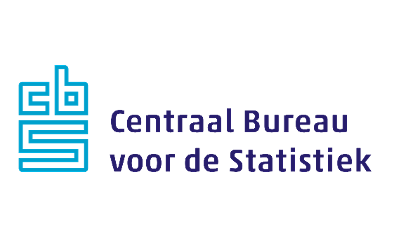Berichten over uw Buurt
Zoals vergunningen, bouwplannen en lokale regelgeving
Zoals vergunningen, bouwplannen en lokale regelgeving
Adressen en contactpersonen van overheidsorganisaties.
Dataset
| State | Available |
|---|---|
| Data owner | Centraal Bureau voor de Statistiek (Rijk) |
| Updated | 22-12-2025 |
| License | CC-BY (4.0) |
| Thema |
|
| Publicity level | Public |
| Metadata | Download (XML/RDF) |
You can do a datarequest to request a specific dataset.
Make a data request
Dit is een dataset die landelijk dekkend is. De data heeft betrekking op heel Nederland.
CloseThis table expresses the use of renewable energy as gross final consumption of energy. Figures are presented in an absolute way, as well as related to the total energy use in the Netherlands. The total gross final energy consumption in the Netherlands (the denominator used to calculate the percentage of renewable energy per ‘Energy sources and techniques’) can be found in the table as ‘Total, including non-renewables’ and Energy application ‘Total’. The gross final energy consumption for the energy applications ‘Electricity’ and ‘Heat’ are also available. With these figures the percentages of the different energy sources and applications can be calculated; these values are not available in this table. The gross final energy consumption for ‘Transport’ is not available because of the complexity to calculate this. More information on this can be found in the yearly publication ‘Hernieuwbare energie in Nederland’.
Renewable energy is energy from wind, hydro power, the sun, the earth, heat from outdoor air and biomass. This is energy from natural processes that is replenished constantly.
The figures are broken down into energy source/technique and into energy application (electricity, heat and transport).
This table focuses on the share of renewable energy according to the EU Renewable Energy Directive. Under this directive, countries can apply an administrative transfer by purchasing renewable energy from countries that have consumed more renewable energy than the agreed target. For 2020, the Netherlands has implemented such a transfer by purchasing renewable energy from Denmark. This transfer has been made visible in this table as a separate energy source/technique and two totals are included; a total with statistical transfer and a total without statistical transfer.
Figures for 2020 and before were calculated based on RED I; in accordance with Eurostat these figures will not be modified anymore. Inconsistencies with other tables undergoing updates may occur.
Data available from: 1990
Status of the figures: This table contains definite figures up to and including 2023, figures for 2024 are revised provisional.
Changes as of December 2025: Figures on biomass boilers for heat only have been revised, resulting in a slight increase for 2021.
Changes as of November 2025: Figures have been revised from 2021 – 2022 and updated for 2023 -2024 The revision concerns improved data on (bio)diesel oil consumption by mobile equipment in the construction and services sectors. This results in a shift of biodiesel consumption in energy application transport to energy application heating and cooling. These changes amount to a few PJ.
Changes as of june 2025: Figures for 2024 have been added.
Changes as of January 2025
Renewable cooling has been added as Energy source and technique from 2021 onwards, in accordance with RED II. Figures for 2020 and earlier follow RED I definitions, renewable cooling isn’t a part of these definitions.
The energy application “Heat” has been renamed to “Heating and cooling”, in accordance with RED II definitions.
RED II is the current Renewable Energy Directive which entered into force in 2021
When will new figures be published? Provisional figures on the gross final consumption of renewable energy in broad outlines for the previous year are published each year in June. Revised provisional figures for the previous year appear each year in June.
In November all figures on the consumption of renewable energy in the previous year will be published. These figures remain revised provisional, definite figures appear in November two years after the reporting year. Most important (expected) changes between revised provisional figures in November and definite figures a year later are the figures on solar photovoltaic energy. The figures on the share of total energy consumption in the Netherlands could also still be changed by the availability of adjusted figures on total energy consumption.
Landing page: https://opendata.cbs.nl/statline/portal.html?_la=en&_catalog=CBS&tableId=84917ENG
No feedback found.
You can do a datarequest to request a specific dataset.
Make a data requesthttps://opendata.cbs.nl/ODataApi/OData/84917ENG
Renewable energy; final consumption energy sources/techniques, energy application
https://opendata.cbs.nl/ODataFeed/OData/84917ENG
Renewable energy; final consumption energy sources/techniques, energy application
No feedback found.